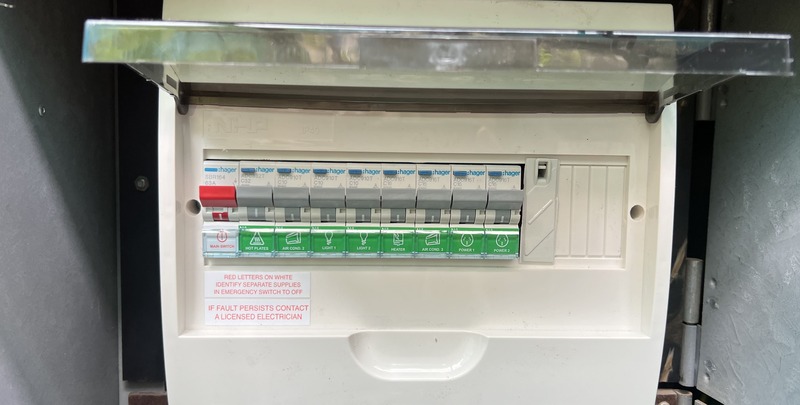Electrical Safety: Know Your Switchboard

There are fuses, circuit breakers and RCD safety switches. Which is which and how do they provide electrical safety in the home?
Back in the day switchboards had ceramic fuses with wire. Actually, plenty still do. And people still buy the fuse wire and rewire them when they burn out.
Often fuse wire would be left in the electrical switchboard box so it was easily at hand when a fuse went. The householder would stumble out with a torch and a screwdriver, find the offending ceramic fuse by trial and error, pulling out each fuse and checking to see if the wire was intact.
Then they would fiddle about putting in a new wire. In older homes, this scenario still plays out. Old fashioned fuses are designed mainly to prevent electrical fires and do nothing to stop you from being electrocuted.
Lightning Reaction
Modern circuit breakers do essentially the same thing as fuses. They switch off the circuit to prevent damage to the wiring and appliances when too much current is flowing through it.
Like fuses, they offer no protection against electrocution. The big advantage they have over old-fashioned fuses is that they are a switch that is easily turned back on once the problem is resolved. But circuit breakers are not the same as RCD safety switches. Safety switches detect current leakage or a change in the flow and turn off in milliseconds. That means as soon as the current is interfered with, the electricity turns off so quickly you can’t be harmed.
What is the difference between a circuit breaker and a safety switch?
The crucial difference between circuit breakers and safety switches is that circuit breakers protect equipment and safety switches protect you and your family.
So how can you tell if what you’ve got in the switchboard are circuit breakers or safety switches? Safety switches have a test button with a ‘T’ on it and circuit breakers don’t.
How to Test for Safety
It’s recommended that you test RCD safety switches regularly.
It’s simple to do. Just push the test button and the switch should turn off. Go inside and check that it has in fact turned off the circuit. If that’s all right, simply turn the switch back on. But if the test fails – the switch doesn’t go off and the circuit remains live – it’s time to call an electrician. Only a licensed electrician is permitted to repair or replace safety switches so your electrical safety is maintained.

What are the common causes of safety switches tripping?
Appliances that are faulty can leak extra current, and the change in flow trips the safety switch.
You’ll have to unplug everything and then try each appliance to see which one is the cause of the problem. Heavy rain can get into the walls and outdoor powerpoints and cause a shut down. Wait until things have dried before you turn on again. Sometimes too many appliances on at once can be the cause. Old wiring can cause problems too. Nothing being perfect, the switch itself can occasionally be the issue.
Why change from old fuses?
You might be one of those people in an old house with fuse wire tucked into the switchboard box and a row of ceramic fuses.
There are good reasons why it’s time for an upgrade to better circuit breakers or, for maximum safety, RCD safety switches. If the old fuse keeps blowing, you definitely need to modernise. It’s not coping with the demands being put on it. It’s so much more convenient to simply have to flick a switch to reset things. It’ll add value to the house. But it’s the peace of mind that comes from knowing you and your family are not likely to get electrocuted with proper safety switches that should sway you.
Get an electrician in from Upside Down to sort out your switchboard so that everything runs smoothly and electrical safety is not compromised.
Please note: This information is provided for advice purposes only. Regulations differ from state to state, so please consult your local authorities or an industry professional before proceeding with any work. See our Terms & Conditions here.